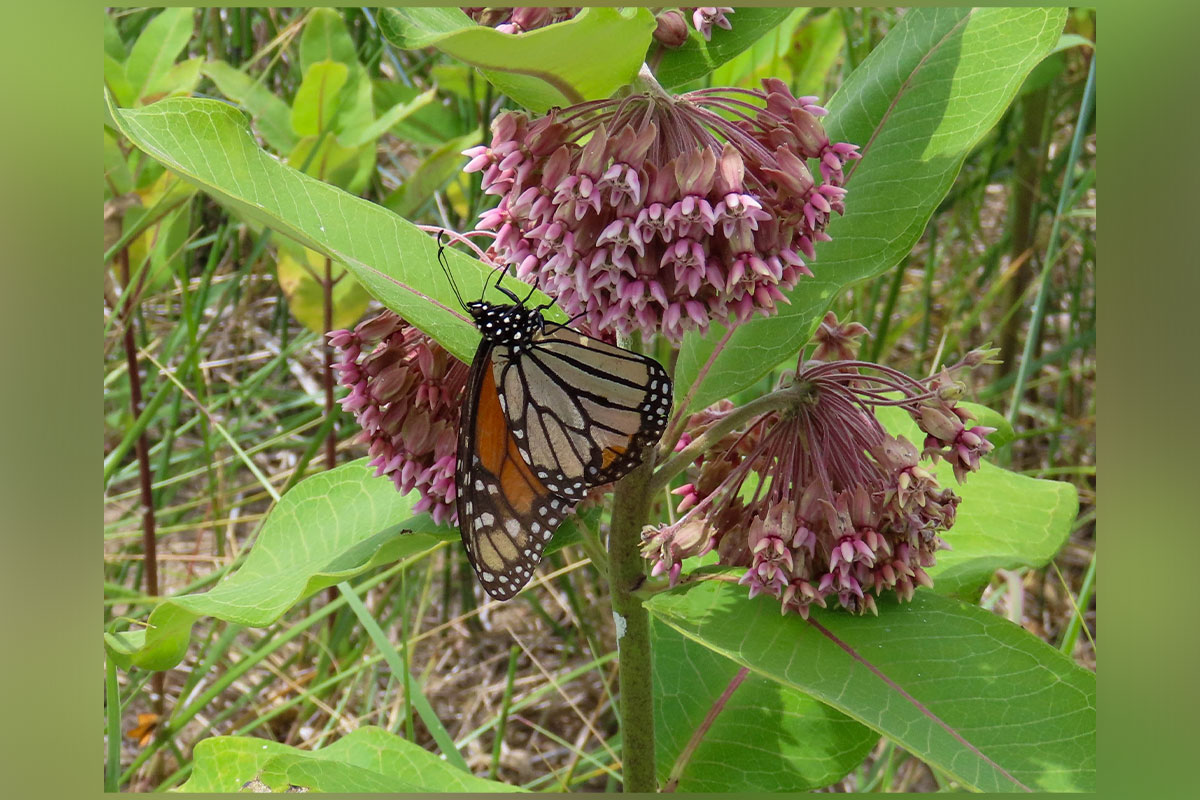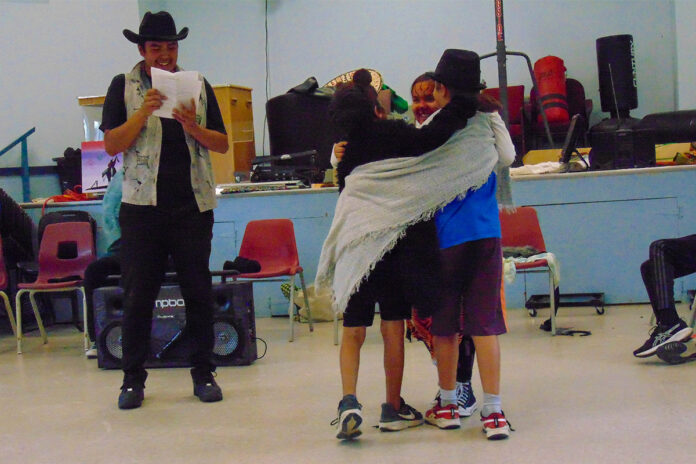MANITOULIN—Common milkweed growing on sand dunes along the boardwalk at Providence Bay on Manitoulin Island has been monitored for over 20 years for signs of caterpillars of monarch butterflies.
It has been common in past years to see adult monarchs in late May that had recently crossed Lake Huron from Michigan and Ohio, mate and lay eggs.
But the spring of 2024, has been different from previous years. Few adults were observed anywhere on Manitoulin Island this May and by the end of June, there were still few signs of monarch caterpillars on the Providence Bay milkweed.
It appears that the usual wave of northward flying adult monarchs did not arrive this year. This is unfortunate because the milkweed at Providence Bay is the healthiest and most abundant in years so the absence of monarch caterpillars is not caused by a problem with the host milkweed.

However, about 40 monarch butterflies were observed at Providence Bay on July 4, 2024 flying up and down the milkweed patch. These adults were in all stage of aging from those with faded and damaged wings, to brightly coloured, freshly emerged adults.
It appears that these monarchs had recently flown across Lake Huron from the south. All were actively flying, drinking nectar from milkweed flowers, while some engaged in pre-mating flight activity. Some were observed laying eggs.
Unfortunately, no monarch caterpillars were observed along the boardwalk on July 21. About 10 adults were observed flying back and forth over the boardwalk milkweed, but there were no signs of leaves damaged by caterpillar feeding. This does not bode well for Manitoulin producing its usual share of monarch butterflies for the fall migration.
The development of monarch populations is largely a function of weather conditions that occur during the breeding season. It could be that poor weather conditions in May and June in the northern states prevented monarchs from flying any further north.
Or, the adults observed on July 4 may have laid eggs but the young larvae were knocked off the plants by heavy rain storms.
In past years, the butterflies arriving in May resulted in one or two generations of Manitoulin-produced monarchs that joined others in Eastern North America in the early fall for the long flight to Mexico.
The U.S. based organization Monarch Watch reported the second lowest population on record of overwintering adults in Mexico this past winter. Sadly, it could be that the Eastern North American population of monarch butterflies continues to decline and the absence of this iconic insect on Manitoulin Island is part of this trend.
If the few monarch adults currently on Manitoulin Island lay eggs, there may be time for some of their offspring to become a fall generation. If my wife Marilyn and I can catch some of these while they are feeding on flowers along the highways, or hanging at roosting sites in the evenings, we will attach tags to their wings.
If we can tag a good number, a Manitoulin-reared monarch may finally be located among the overwintering population, proving without doubt that our butterflies fly across Lake Huron all the way to central Mexico.
by Joe D. Shorthouse





